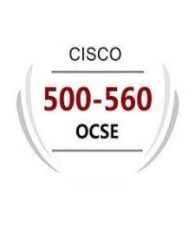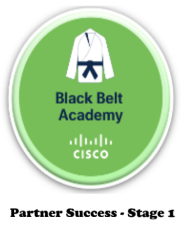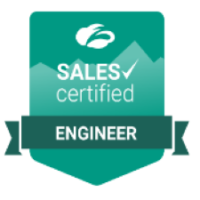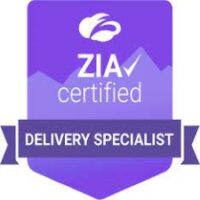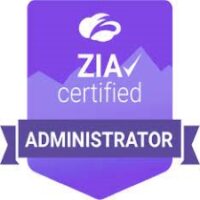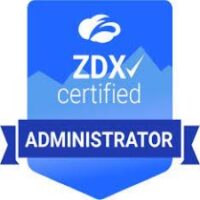Have any terms in the cybersecurity space generated more buzz than “zero trust” and “AI”? At risk of sounding like a Magic 8 Ball, my reply is no.
Over the last several years, countless security solutions have been labeled “zero trust,” and countless others have had “AI” inserted into their names. Sadly, the widespread overuse (i.e., misuse) of these terms has diluted their meaning and, as a result, their perceived value. And yet, amidst this misappropriation is an obvious implication: where there’s smoke, there’s fire.
In other words, zero trust and AI actually refer to real, specific things that are of value to organizations’ security postures. If they didn’t, we wouldn’t see countless vendors trying to capitalize on the terms.
Zero trust and AI are core to what we do at Zscaler, and we are committed to bringing clarity to this conversation. Let’s discuss zero trust, AI, and how Zscaler brings the two together to fantastic effect.
Zero trust architecture with ZscalerZero trust is not another point product to add to the perimeter-oriented status quo, with its firewalls, VPNs, castle-and-moat security, and the weaknesses of that methodology. Rather, zero trust is a distinct architecture based on the principle of least-privileged access, whereby users get access only to the resources they need—as opposed to receiving access to the network and all its connected resources.
The Zscaler Zero Trust Exchange platform delivers zero trust architecture that secures users, workloads, IoT/OT devices, and B2B partners. It acts as an intelligent switchboard that provides secure any-to-any connectivity in a one-to-one fashion, without extending network access to anyone or anything (not to mention, it also offers cyberthreat protection, data protection, and more). Zscaler delivers this secure connectivity as a service from the world’s largest inline security cloud, which features:
150 data centers worldwide
400 billion requests processed each day
500 trillion telemetry signals analyzed daily
In other words, Zscaler has zero trust expertise and the scale to prove it.
Why Zscaler is ideally positioned to capitalize on AIBeyond demonstrating Zscaler’s success in zero trust, this scale also fuels the platform’s success with AI. That’s because AI requires a large, relevant data set from which it can learn in order to understand and solve problems effectively. Zscaler has exactly that with its 400 billion daily platform transactions (more than 45 times the number of daily Google searches) and 500 trillion daily telemetry signals.
This data set is further enhanced by research from ThreatLabz (our global threat research team), data from more than 60 threat intel feeds, and prebuilt integrations with more than 150 other technologies that also serve as data sources. As a result, Zscaler delivers a variety of powerful security and business solutions that leverage AI for increased automation and effectiveness.
Zero trust + AISo, what do these security and business solutions that unite zero trust and AI look like? Let’s discuss a quick example of each.
First, in terms of security, there is Zscaler AI Auto Data Discovery, which leverages the reach of our zero trust architecture alongside the automation and precision of AI. As such, it automatically finds and classifies data anywhere across SaaS apps, private apps, end user devices, email, and even encrypted traffic. It then produces a helpful report on the results. This is a massive boon to ensuring airtight data security, and it also saves time for admins and reduces overhead by:
Enabling admins to take advantage of one comprehensive data protection offering instead of managing multiple disjointed point products
Automatically discovering sensitive data without requiring admins to configure any dictionaries or policies
Next, as an example of a solution that helps optimize operations, there is AI-powered root cause analysis in Zscaler Digital Experience (not to mention other AI capabilities). As the Zscaler platform sits in the flow of enterprise traffic, ZDX provides a complete, hop-by-hop view of each user’s connection, for every member of an organization. With the click of a button, AI-powered root cause analysis can:
Rapidly and automatically troubleshoot user experience issues and identify their underlying causes, expediting resolution
Save time both for help desk teams and end users, ultimately saving money for the organization
To read more about our potent combination of zero trust and AI, as well as the various problems it can solve, read our latest white paper, “Zero Trust + AI: Secure and Optimize Your Organization.”
To learn more about zero trust in particular, register for one of the upcoming renditions of our recurring webinar, “Start Here: An Introduction to Zero Trust.”
[#item_full_content] [[{“value”:”Have any terms in the cybersecurity space generated more buzz than “zero trust” and “AI”? At risk of sounding like a Magic 8 Ball, my reply is no.
Over the last several years, countless security solutions have been labeled “zero trust,” and countless others have had “AI” inserted into their names. Sadly, the widespread overuse (i.e., misuse) of these terms has diluted their meaning and, as a result, their perceived value. And yet, amidst this misappropriation is an obvious implication: where there’s smoke, there’s fire.
In other words, zero trust and AI actually refer to real, specific things that are of value to organizations’ security postures. If they didn’t, we wouldn’t see countless vendors trying to capitalize on the terms.
Zero trust and AI are core to what we do at Zscaler, and we are committed to bringing clarity to this conversation. Let’s discuss zero trust, AI, and how Zscaler brings the two together to fantastic effect.
Zero trust architecture with ZscalerZero trust is not another point product to add to the perimeter-oriented status quo, with its firewalls, VPNs, castle-and-moat security, and the weaknesses of that methodology. Rather, zero trust is a distinct architecture based on the principle of least-privileged access, whereby users get access only to the resources they need—as opposed to receiving access to the network and all its connected resources.
The Zscaler Zero Trust Exchange platform delivers zero trust architecture that secures users, workloads, IoT/OT devices, and B2B partners. It acts as an intelligent switchboard that provides secure any-to-any connectivity in a one-to-one fashion, without extending network access to anyone or anything (not to mention, it also offers cyberthreat protection, data protection, and more). Zscaler delivers this secure connectivity as a service from the world’s largest inline security cloud, which features:
150 data centers worldwide
400 billion requests processed each day
500 trillion telemetry signals analyzed daily
In other words, Zscaler has zero trust expertise and the scale to prove it.
Why Zscaler is ideally positioned to capitalize on AIBeyond demonstrating Zscaler’s success in zero trust, this scale also fuels the platform’s success with AI. That’s because AI requires a large, relevant data set from which it can learn in order to understand and solve problems effectively. Zscaler has exactly that with its 400 billion daily platform transactions (more than 45 times the number of daily Google searches) and 500 trillion daily telemetry signals.
This data set is further enhanced by research from ThreatLabz (our global threat research team), data from more than 60 threat intel feeds, and prebuilt integrations with more than 150 other technologies that also serve as data sources. As a result, Zscaler delivers a variety of powerful security and business solutions that leverage AI for increased automation and effectiveness.
Zero trust + AISo, what do these security and business solutions that unite zero trust and AI look like? Let’s discuss a quick example of each.
First, in terms of security, there is Zscaler AI Auto Data Discovery, which leverages the reach of our zero trust architecture alongside the automation and precision of AI. As such, it automatically finds and classifies data anywhere across SaaS apps, private apps, end user devices, email, and even encrypted traffic. It then produces a helpful report on the results. This is a massive boon to ensuring airtight data security, and it also saves time for admins and reduces overhead by:
Enabling admins to take advantage of one comprehensive data protection offering instead of managing multiple disjointed point products
Automatically discovering sensitive data without requiring admins to configure any dictionaries or policies
Next, as an example of a solution that helps optimize operations, there is AI-powered root cause analysis in Zscaler Digital Experience (not to mention other AI capabilities). As the Zscaler platform sits in the flow of enterprise traffic, ZDX provides a complete, hop-by-hop view of each user’s connection, for every member of an organization. With the click of a button, AI-powered root cause analysis can:
Rapidly and automatically troubleshoot user experience issues and identify their underlying causes, expediting resolution
Save time both for help desk teams and end users, ultimately saving money for the organization
To read more about our potent combination of zero trust and AI, as well as the various problems it can solve, read our latest white paper, “Zero Trust + AI: Secure and Optimize Your Organization.”
To learn more about zero trust in particular, register for one of the upcoming renditions of our recurring webinar, “Start Here: An Introduction to Zero Trust.””}]]

